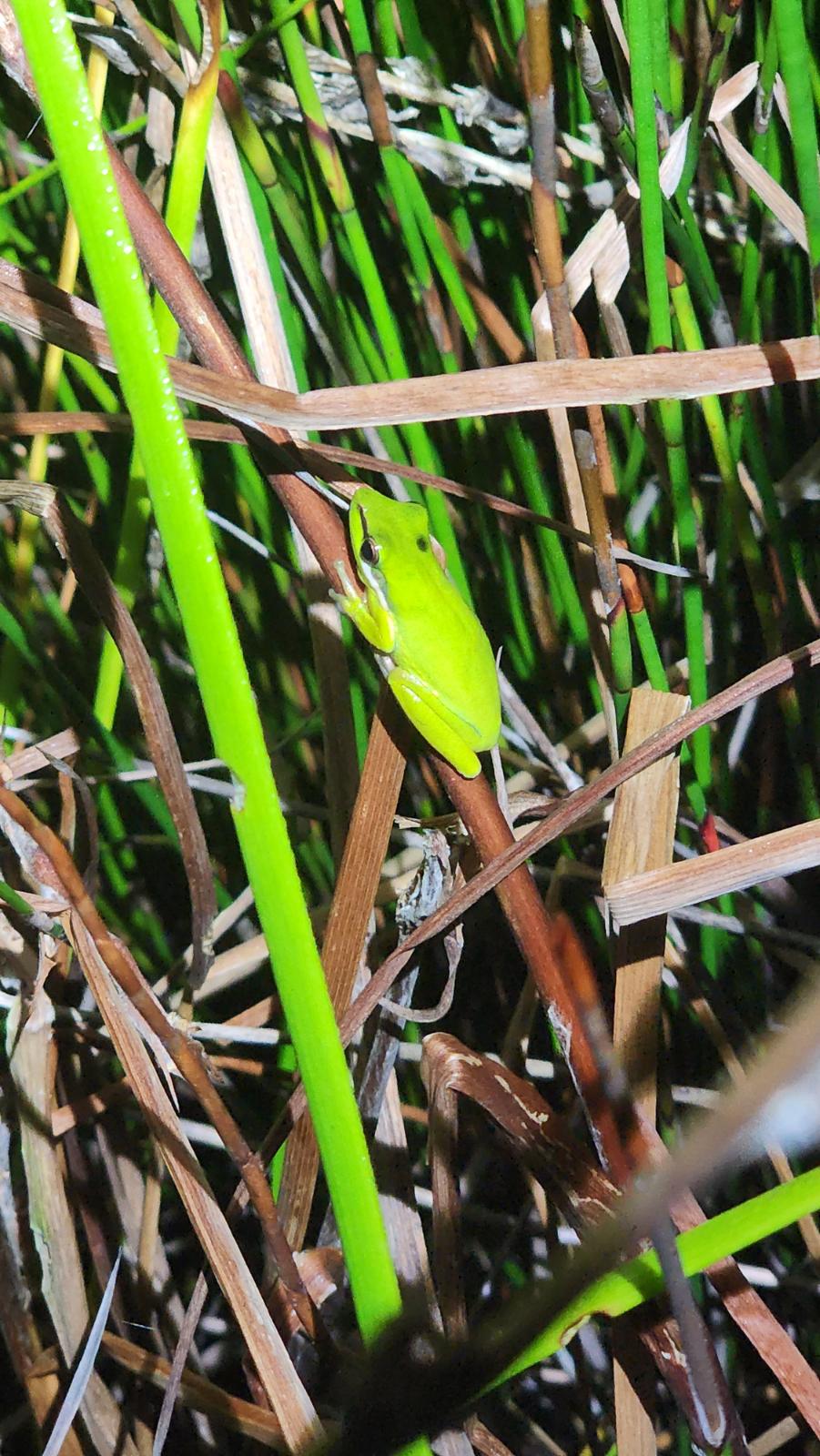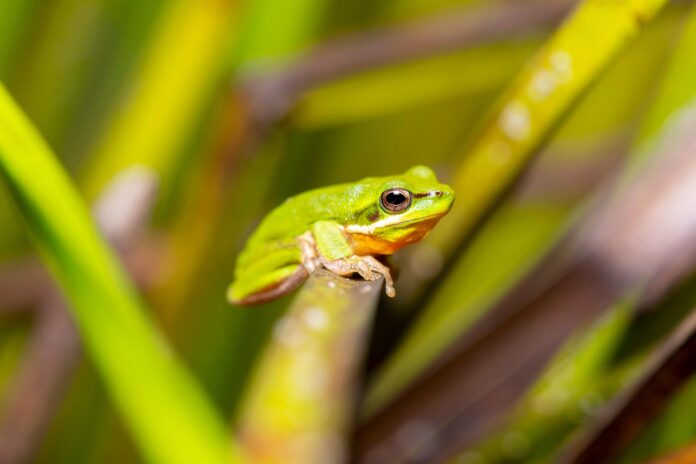A small amphibian with a conservation status listed as vulnerable has been found to be using and breeding in specially created wetland habitats on the Sunshine Coast.
New research has revealed a significant achievement in conservation efforts for the wallum sedge frog at the masterplanned Aura community.
Renowned frog habitat restoration expert Dr Mark Bayley, who has worked closely with Aura developer Stockland since 2012, said early efforts had focused on understanding why these frogs have such unique habitat requirements.
Once this was understood, rehabilitating vast areas of the conservation lands was able to commence.
“Before we turned this land into a mosaic of frog habitat wetlands and foraging areas, this land was largely dominated by pine plantations and cattle-grazing country,” Dr Bayley said.
“Initially, we needed to created small, shallow ponds for the frogs to colonise and breed. Following this, large areas were restored around each pond to allow the frog to move (from pond to pond) and feed.
“The wallum sedge frog is a rare frog with extremely unique habitat requirements, so to successfully construct its habitat from such degraded land, and get it to a point where the frogs are happy to be here and breed, is an Australian first – at least on the scale being undertaken at Aura.”

The wallum sedge frog (Litoria olongburensis) is a small, arboreal frog found in wallum habitats, characterised by acidic conditions and semi-ephemeral wetlands. It is known as one of the ‘acid frogs’ due to its preference for living and breeding in mildly acidic environments.
Stockland senior environment and community development manager Mark Stephens said it was an exciting milestone in the commitment to rehabilitate a significant conservation area as habitat for the native species.
“We are creating 700 hectares of conservation land from ex-degraded pine plantation in Aura and through this effort we’re creating significant habitat for the wallum sedge frog to not only inhabit, but flourish,” Mr Stephens said.
“This is thanks to incorporating strategically located wetlands across this conservation land into Aura’s design. These wetlands, or small ponds, not only allow for protection and breeding of the wallum sedge frog, but also the other two acid frog species found across the site.
“Through the collaborative effort of working with the community, environmental groups and international experts, we are confident we are rehabilitating the old degraded pine plantation land into a functioning ecosystem for frog species – all of which will form permanent conservation lands once the development is complete.”
To date, Dr Bayley and his team have constructed 155 small wetlands across 200-plus hectares within the Aura site and dedicate time every year to monitoring the created habitat to ensure not only the wellbeing of the wallum sedge frog population, but the ongoing success of the restoration project.
“Breeding season for these frogs generally falls anytime between October to April each year. We’re finding more frogs in more of the ponds across Aura, and we expect that to continue,” he said.
Mr Stephens said Stockland was committed to continuing to protect and regenerate the environment.
“With inevitable growth comes significant responsibility, and with two decades of experience in building sustainable communities on the Sunshine Coast, Stockland is committed to not just protecting the local environment, but enhancing it for future generations,” he said.
“We are delighted with these frog survey results and will continue to monitor the progress in the years ahead. We’d also like to thank all those who have contributed to this great achievement – it’s been a truly collaborative effort.”
For more on Aura click here.
Like stories that inform, connect and celebrate the Sunshine Coast? So do we. Join an independent local news revolution by subscribing to our FREE daily news feed at the bottom of this article.





